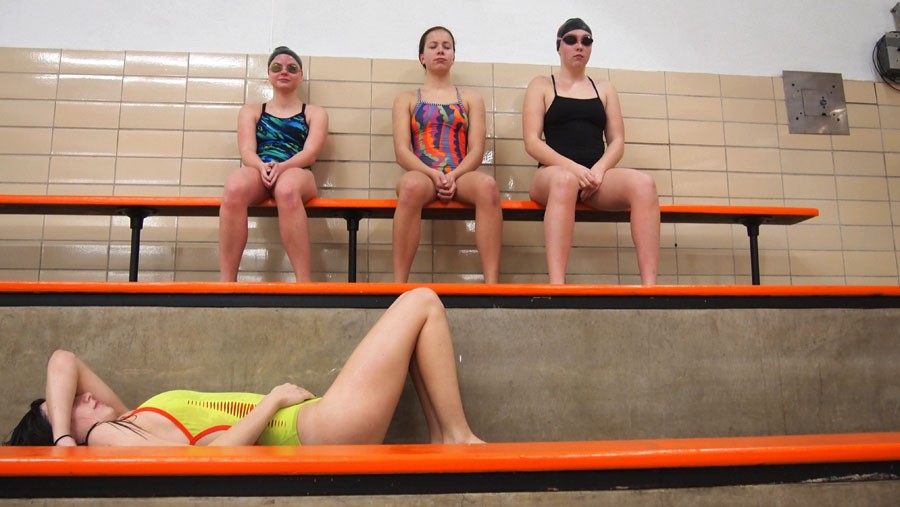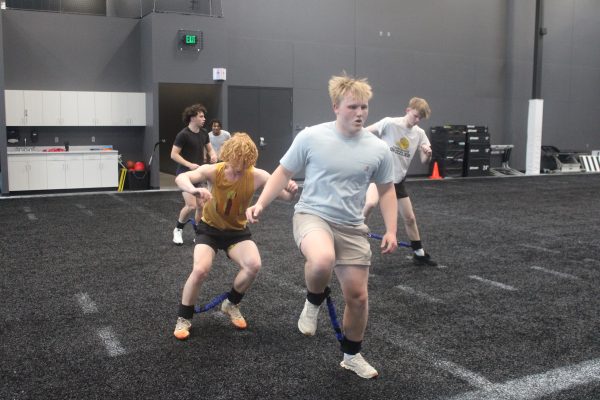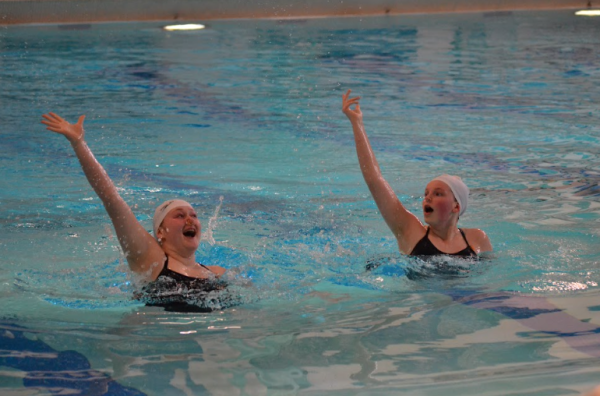Mindfulness results in athletic gains
Studies show visualization aids in success
Visualize success: Junior Ellen Schempp and freshmen Grace Steffy, Mazie Lainsbury and Lexi Lee visualize Nov. 3 to prepare for races at sections. The section meet takes place Nov. 11 and 13.
November 12, 2015
Alexandra Wagener, a doctor of psychology with a specialization in sports medicine and performance, said visualizing can be one of the most beneficial ways an athlete can improve their performance.
“Athletes who use visualization are able to absorb more of their surroundings and become mindful of what may be going on during pressure-filled situations,” Wagener said.
According to athletic scientific studies, 90 percent of athletic performance is mental, not physical. However, the majority of athletes only spend time training their body and neglect their minds, according to Wagener.
Junior Nils Rykken said he visualizes to prepare himself to perform well in swim races.
“Being mentally prepared for a race is more important than being physically prepared,” Rykken said. “If you’re not in the right mindset, odds are you aren’t going to perform as well as you want to.”
The imagery most beneficial to athletes has vivid details, incorporates all five senses, occurs in “real time” and has a positive focus, according to Applied Sports Psychology.
Wagener said active visualization techniques stimulate the brain the same amount as the actions themselves.
“When we visualize, the premotor cortex, prefrontal cortex and the cerebellum of the brain become as active as it would as if the person was actually doing the behavior,” Wagener said.
Rykken said visualizing motivates him and helps him stay focused on his goals.
“Visualizing helps keep me motivated because I’m remind- ing myself what I’m working for,” Rykken said.
Wagener said visualization benefits anyone who utilizes it, not just athletes.
“Visualization can help more than just athletes,” Wagener said. “Students can practice visualizing taking tests to help calm themselves, have better focus and see themselves being successful, thus improving confidence going into an exam.”
Wagener said visualization is a productive way for students to cope with stress as well.
“It allows us to see ourselves able and capable of being able to cope,” Wagener said.

Hi I’m Neda and I’m a writer and photographer for the Echo. My favorite hobbies include eating, laying around and laughing at my own jokes, developing...













